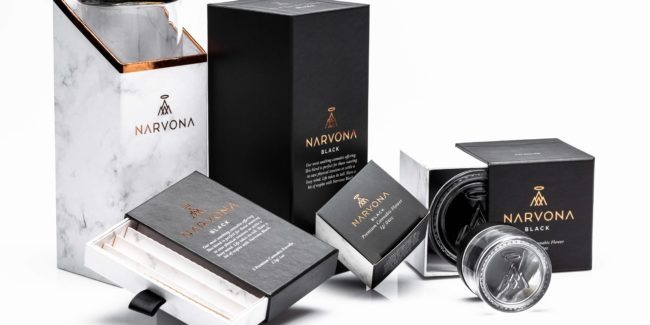Whether you work in cannabis or something else, one of the scariest words a small business owner can hear is “Marketing”. For the most part, people start their own business because they love what they do. The idea of coming up with a marketing plan, much less a budget, sounds dreary and monotonous for many business owners. Nevertheless, cannabis marketing is one of the most vital aspects of owning a successful business, and one of the most critical steps in the process is determining how much you should spend on marketing.
In this blog post, you’ll not only learn how much to spend on marketing but also what goes into a marketing budget and how to craft a practical spending plan. Let’s get started!
What’s in a Cannabis Marketing Budget?
Before we dive into how much you should spend on marketing, it is important to understand what exactly it is that you will be spending money on. A marketing budget template can include all sorts of things, but typically, you will find that most budgets include the following:
1. Advertising – In many of the states where cannabis is legal, you will often find your advertising efforts severely restricted. However, there are many modern ways to go around more traditional advertising outlets. You can build a viral social media following by investing in great content,
2. Web Development – In the 21st century, the most essential piece of both your branding and marketing efforts will be the design of your website. Whenever someone looks up your company, your website will be the first thing they search for, so be sure to make a good impression!
3. Public Relations – While you may not end up spending too much money on public relations, it sometimes pays to use a good PR firm to get the word out.
4. Events – A great way to gain more clients and leads is to attend trade shows. This is not necessarily going to be your #1 go-to marketing strategy, but if you have room left over in the budget, visiting a trade show or two is a good way to spend it.
Ways to Determine Your Marketing Budget
1. Set Dollar Amount – Small businesses will often want to determine their marketing budget by setting a strict dollar amount. They will spend X amount of money, and that is it. While this may be a good idea for small, one-time expenses, this approach will not work if you’re trying to determine a regular marketing budget.
2. Matching Competitors – Another way business owners try to determine their marketing budget is by looking at the competition and matching them. This is not necessarily a bad idea, but it’s not a good idea either. You want your marketing budget to reflect your own business circumstances, and if you try to “keep up with the Joneses” in your marketing efforts, it might lead to poor results.
3. Objective-based – Setting your marketing budget around achieving a certain objective is, on its face, a good idea. However, we are talking about setting up a regular marketing budget, which means you are not after a finite objective.
4. Percentage of Sales Revenue – Pegging your expenses to a set percentage of your sales revenue is the best way to determine your marketing budget. Basing your expenses off of your sales revenue creates a regular budget that it is fact-based and provides you with the flexibility to change with the circumstances.
How much of your sales revenue should go towards marketing? For companies making less than $5 million a year in revenue, the U.S. Small Business Administration recommends spending between seven to eight percent. Others will recommend spending between 9-12%. So which one is correct? Well, it depends on your circumstances.
General Advice: A good rule of thumb to follow when coming up with a marketing budget template is spending between 2-5% of your yearly sales revenue. Sometimes, you may find yourself needing more, and in other situations, you may find yourself needing less, but generally spending 2-5% is a reasonable amount.
Before You Start Spending Your Marketing Budget
Now that you’ve got your budget set, it’s time to take a step back to make sure that you are adequately prepared for your marketing campaign. Before you start, do these two things:
1. Set Goals – What does success look like? If you haven’t set your marketing goals, that question will be impossible to answer. Try to keep your marketing goals simple, achievable, and, most importantly, measurable.
Marketing Goals Examples
- A. Business Growth – Everyone wants to grow their business, right? But how do you measure it? The answer is by looking at both your sales revenue and number of leads. If one metric grows while the other remains the same, take a step back and find out what’s working and what’s not.
- B. Increase Web Traffic – While web traffic is not always tied to revenue, the simple fact is that the more people you get visiting your website, the more likely you are to get new clients and sales. Look at the number of unique visitors you get in a month to measure your success.
- C. Increase Your Qualified Leads – It is easier to sell a product or service if you are speaking to someone who has already expressed interest in said product or service.
2. Check Your Brand for Flaws– Now that you have your goals set, you want to make sure that your company or brand is capable of reaching these goals. It’s hard to admit that your brand has flaws, but the sooner you address the issues, the easier your marketing will be. Here are a few things you need to ask yourself:
- A. Is your brand is up to date? – If you have been in business for a long time, there’s a good chance that your company’s branding might be out of date. It’s sad to say, but good idea’s don’t always last. Here’s a quick guide to help you know if it’s time to rebrand.
- B. Is your brand is consistent? – Whether you’re about to engage in an expensive marketing campaign or you’re just doing your daily business, it is vital that you maintain brand consistency. Does your branding look the same across the board? Does it have the same feel? If your brand is not consistent, you will undermine both your marketing and branding efforts.
- C. Are there any artificial barriers preventing conversion? – Sometimes we create our own problems. In the case of business, sometimes those problems will prevent potential customers from converting into actual customers. If you have an online shop, check and make sure that it works efficiently and that the user interface makes sense. Make sure it’s not difficult to sign up for your company newsletter. Eliminate every single conceivable inconvenience from your sales funnel. Otherwise, your marketing efforts will not work as well as they should.
- D. Do you have the tools to measure your results? – If you have a goal, but you don’t have the means to measure your results, you will never have a clear picture of how well your marketing efforts performed. Figure out what your metrics of success are and ensure that you have the means to measure those metrics; whether that is a specific software, service, or procedure.
- E. Is your marketing aligned with your overall growth strategies? The whole point of marketing is to help elevate your business’ growth. Far too many businesses come up with that they think is a great marketing strategy, only to realize that it doesn’t help their overall growth plan. Make sure your marketing is aimed at the right customers.
How to Spend Your Cannabis Marketing Budget
The final step before embarking on your marketing campaign is the question of how you should spend your budget. Should you put 99% of your funds into social media and the other 1% in branding? Or would you be better served going an even 50/50? Again, where you spend your marketing budget will depend mainly on your own goals, but here’s a good rule of thumb when it comes to marketing budget allocation.
1. 50%: Approximately 50% of your cannabis marketing marketing budget should go towards branding, your website, and marketing strategy. Your brand is the sum of your company’s values and strengths, and it will play a significant role in how consumer perceive you. Likewise, your website will serve as the first impression for many of your potential customers. And if there is one thing that you shouldn’t cheap out on, it’s website strategy.
2. 25%: For your online presence, you should allocate roughly 25% of your marketing budget. By online presence, we mean things like social media, email marketing, online videos, virtual events, online directories, etc. Like it or not, doing things like consistently posting great, original content on social media and hosting webinars are some of the best ways to grow your business in this increasingly digital world.
3. 15%: Advertising and promotions will make up around 15% of your overall budget. While there is still power in traditional forms of advertising and media, more and more businesses are starting to turn to social media and content creation to generate new customers and leads.
4. 10%: The remaining 10% of your marketing budget can go towards things like public relations or cannabis trade shows. Using a traditional PR firm or visiting trade shows can help you gain more customers, but they’re not necessarily your go-to solution for most businesses. If neither fit into your overall strategy, simply reallocate your remaining budget to where you think it will work best.



